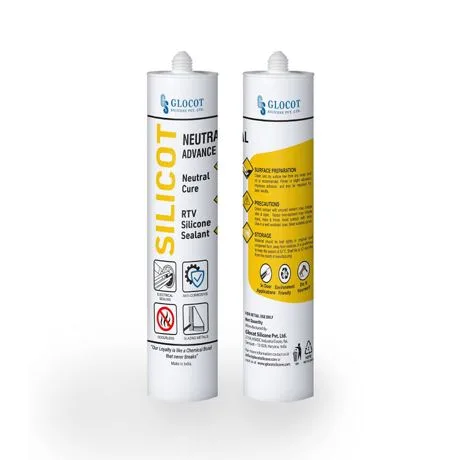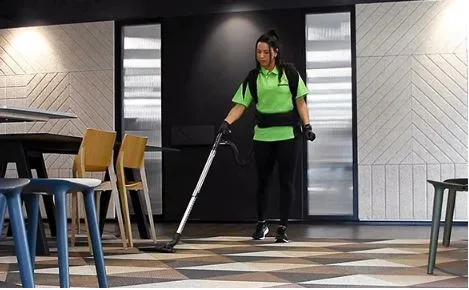How Do Advanced Material Combinations Ensure Safety and Durability in Modern Construction?
Safety and durability have become essentials in modern construction rather than optional. As architectural designs continue to change and safety regulations become increasingly strict, the choice of materials has become an important aspect in determining secure spaces. In residential complexes to commercial infrastructures, construction contractors are increasingly using specialized materials that not only enhance the integrity of constructions but also the safety of occupants.
But this balance is not easily reached, because it involves solutions that resist fire, moisture, changes in temperature and environmental pressures. Two such materials, fireproof wooden doors and RTV neutral silicone sealants, play a pivotal role in this process.
Understanding how they function individually and together can transform construction standards and redefine long-term reliability.
Why Are Fireproof Wooden Doors Essential in Modern Buildings?
Fire safety is a phrase that is used to describe the concern of architects and developers worldwide. Wooden doors have a rich aesthetic value and can be used in a wide variety of settings, but untreated wood can burn relentlessly. This weakness exposes one to serious dangers in the residential and commercial environment where evacuation time is minimal. To address this, fireproof wooden doors are engineered with specialized treatments and core materials that provide resistance to high temperatures and flame spread.
These are doors made of several sheets of fire-resistant boards, with treated wood veneers. Their construction enables them to be stable, structurally sound, and insulated when a fire occurs. Certified fireproof wooden doors undergo rigorous testing under standardized conditions to ensure compliance with international safety guidelines. They help to extend the useful time of safe evacuation and reduce the damage by reducing the rate of heat transfer and limiting the extension of flames.
In addition, they are not limited to homes and offices. Fire-rated wooden doors have become a very important product in hospitals, learning institutions, shopping centers, and industrial premises because they are required to comply with the regulations and have similar aesthetics. It is this combination of grace and safety that has made them a favorite among developers who want a high-end but secure interior product.
How Does RTV Neutral Silicone Sealant Enhance Structural Safety?
Fireproof doors offer great protection but the efficiency of these doors relies on how they are installed and also on the sealing methods. This is where RTV neutral silicone sealant comes in handy in building works. Here, RTV is the initials of Room Temperature Vulcanizing which connotes that the sealant is capable of curing at the ambient temperature, without the need of extra heat.
This allows it to be very versatile because its neutral curing system allows it to be used on a large variety of surfaces, such as wood, glass, aluminum, and concrete.
The major strength of this material is that it possesses an outstanding ability to withstand temperature changes, moisture, and UV radiation. These properties make RTV neutral silicone sealants ideal for sealing gaps around fireproof wooden doors, window frames, and structural joints. They develop an airtight, flexible, and long-lasting seal, which improves insulation, eliminates water leakage, and ensures the stability of the structure under stress.
Moreover, the sealants are non-corrosive and they have good adhesion even to sensitive surfaces that can easily be damaged by acidic sealants. Neutrality in their chemistry eliminates material degradation and is hence a good choice when it comes to providing long-term safety in high-performance construction settings. This is especially useful in fire-rated assemblies where the integrity of sealing points is vital to the overall effectiveness of the system.
How Do Fireproof Wooden Doors and RTV Neutral Silicone Sealants Work Together?
There is no single material in contemporary construction that will guarantee overall safety, but instead it is a combination of elements that will provide maximum functionality. Fireproof wooden doors and RTV neutral silicone sealants complement each other to create robust safety barriers. Although the door is resistant to flames, smoke, and heat in itself, the sealant attaches the sides and crevices, eliminating the threat of hazardous fire and toxic gas leakages.
As an example, corridors and stairwells are planned to serve as safe evacuation routes in high-rise buildings. When these pathways are covered with fireproof doors and the gaps around these doors are not sealed, the level of protection will be extremely low. By applying RTV neutral silicone sealants, installers close potential weak points, maintaining the fire-resistant rating of the assembly.
What Factors Should Be Considered Before Installation?
Selection of good products is just a matter of decision but effective installation is what defines general performance. When selecting fireproof wooden doors, developers must ensure they comply with internationally recognized fire-resistance certifications, such as BS 476 or UL 10C. The thickness, core materials, and edge sealing systems must be in accordance with the building codes and the purpose of use.
Similarly, when working with RTV neutral silicone sealants, surface preparation is critical. To achieve maximum adhesion, the substrate has to be clean and dry with no dust or oil on it. The grade of sealant chosen is also a consideration because there are different types of sealants used in interiors, exteriors, and in high-temperature tasks. Through professional installation, not only is compliance met, but the life of both products is also ensured.
Another factor that developers should consider is continued maintenance. Fireproof doors should be checked on a regular basis to ensure that they are in good condition and that the sealants are refilled in places that are prone to heavy environmental pressure. With preventive measures in place, property owners are able to ensure safety standards and prevent unexpected performance failures.
How Are These Materials Shaping the Future of Safe Construction?
As cities continue to grow, and the architectural lines change, it is hoped that modern structures will provide beauty and at the same time safety without being compromised. The combination of fireproof doors and high-level sealing technologies is redefining construction best practice. In addition to regulatory requirements, the solutions meet the increasing demands of consumers to have spaces that are eco-friendly, safe, and durable.
Moreover, this is being continuously improved by innovations in the field of material science. Manufacturers are developing next-generation fireproof wooden doors with lighter cores, better acoustic performance, and enhanced environmental sustainability. At the same time, RTV neutral silicone sealants are being reformulated to provide superior adhesion under extreme conditions, making them suitable for innovative designs like frameless glass partitions and modular constructions.
With buildings growing smarter and increasingly complex, the role of protective barriers and sophisticated sealants is going to become more and more central to the process of providing safety to the occupants and the long-term longevity of the structure. To developers, architects, and homeowners alike, the investment in these technologies translates to increased performance levels and infrastructures that are future-capable.
Conclusion:
In the modern day construction environment, safety and durability are two inseparable concepts. Though aesthetics is a factor considered in designs, structural integrity depends on the choice of material that is resistant to environmental and operational factors. Fireproof wooden doors protect against the spread of flames, while RTV neutral silicone sealants secure joints, edges, and gaps to maintain overall system performance.
The combination of these two aspects provides a long-term dependable integrated safety solution that goes beyond the minimum compliance requirements. With the development of modern architecture, this synergy keeps establishing new standards of safe, effective, and quality building.






